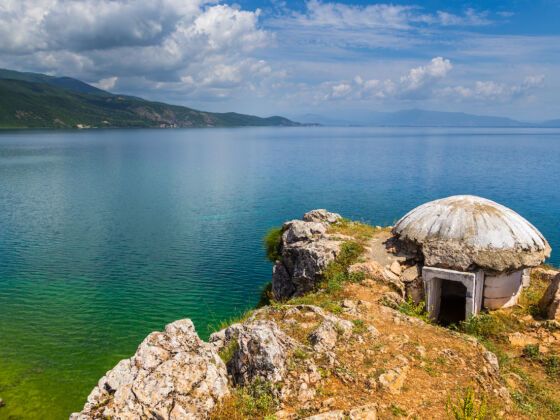Despite the end of Communism in the Balkan region of Europe, much like the rest of Eastern Europe, it remains marked by its past. Military bunkers are one of these lingering remnants. In Albania, bunkers are everywhere, serving as stoic symbols of history. Though many sit abandoned, others have been repurposed in creative ways that breathe new life into otherwise forgotten ruins.

Watch This YouTuber Explore Albania’s Abandoned Communist-Era Bunkers
Between the 1960s and 1980s, over 173,000 bunkers were built in Albania during the reign of Enver Hoxha, an authoritarian leader implementing a hard-core version of Stalisnim. Their construction was the result of a program called “bunkerization,”, wherein bunkers were built all across the country for the purpose of defending it against neighbors’ aggression. Hoxha was so paranoid about an impending attack that he ordered every bunker to be manned constantly, even in the absence of an active threat. The bunker program was a tremendous drain on Albania’s economy, resulting in poor infrastructure and housing conditions — an impact that can be felt in the country even today.
The bunkers were never used for war, as intended. After the authoritarian communist government was dissolved in 1992, the bunkers were abandoned and repurposed for residential accommodation, cafes, storehouses, and animal shelters. A nod to the country’s complicated past, the bunkers remain one of Albania’s most notable and ubiquitous architectural features.
This inspired the people behind the YouTube channel Yes Theory to travel to Albania to explore the bunkers, and discover how they’re being used today.
One bunker, known as the “Tattoo Bunker,” now serves as a tattoo parlor. Others have been turned into cafes, while some, located on private land, are being preserved by the owner in their original condition.
“You can do something inside, but it will always remain a story,” he said.
The YouTubers’ trip in Albania ended at a 2,500-year-old castle, which put the bunkers and the country as a whole into perspective. “These bunkers are only the most recent trace of Albania’s heavy history,” they say in the video. “The castle that had been conquered by the Romans, and then the Ottomans, is now standing as a representation of what Albania has gone through for thousands of years. That despite continuous wars and oppression, the Albanian people have held each other together through traditions and culture that have outlived it all.”
While monuments and ruins tend to feel like time capsules, unchangeable and permanent reminders of the past, they also don’t define a country’s future. Nations and cultures have long histories, and while 25 years of “bunkerization” might sound like a lot, it’s just a small blip on Albania’s long, complex timeline.
In the video, the travelers suggest, “remembering the past while taking ownership of it to create a new future.” The creative repurposing of Albania’s bunkers is an encouraging example of owning the past, embracing it, learning from it, and optimistically looking toward the future.